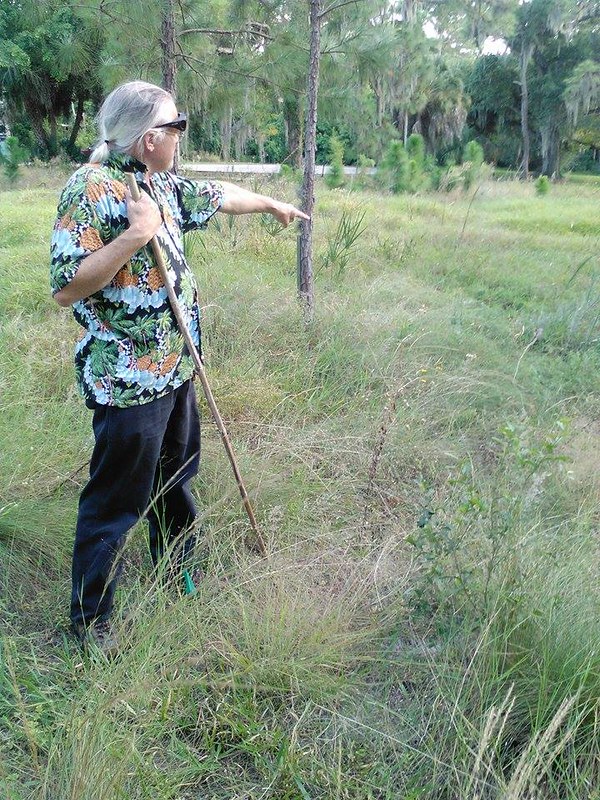
Life as a student in Sarasota is often so stressful it can be difficult to stop and smell the roses. The campus restoration area found on the way to the bayfront provides a much-needed escape. Walking tours through the area, led by Jono Miller – alum and former director of environmental studies – are an easy way to become familiar with one of the lesser-known areas on campus.
The New College campus nature area began as an ISP where students learned how to take an area of lawn and turn it into an area of native grasses and wildflowers.
Although he retired in July of 2014, Miller has remained an active participant in the continuing development of the campus nature area, since he first helped create it. As he led a group into the nature area during a tour, he reflected on the origins of the restoration efforts back in 2010.
“What we had to do was try to kill the turf sod grasses that were there, which was done with herbicide, and we still didn’t get everything,” Miller said. “And then, we hired a firm called ‘The Natives,’ and they have permission to gather wild native plant seed from a variety of locations around the state. We also had some information from the Crosley parcel where USF was built about what vegetation had been there originally, so six years ago, we distributed all this seed and hoped for rain.”
During his tour, Miller often encourages students to touch and become aware of many different types of grasses and other plants that are easily overlooked.
Students also take an active hand in developing the nature area. In the past few years, students have collected wildflower seed of plants such as liatris, which Miller makes a point of introducing during the tour. The liatris is germinated in the greenhouse north of Heiser, before it is planted in the area. The restoration area is largely maintained by students continuously planting native grasses and flowers.
“We have the potential on campus to identify plants we want more of, propagate them in the green house and plant them out here,” Miller commented as he looked back on the nature area at the end of the tour.
Going forward, Miller hopes to work with a team of students to develop a burn plan that would reintroduce fire into the area and be compliant with all requirements of the neighbors and the airport. He estimates that only a third of the area would be burned each year. The plan would be designed to stimulate native plants, while also oppressing exotic invasive plants.
Further opportunities for students to become involved with the nature area include an ISP in January. During spring semester, Professor Brad Oberle’s botany course will also feature a course-long project involving the restoration area, and students will check on the area throughout the semester. Nature walks scheduled and currently led by Miller are also offered. Students interested in either the ISP opportunity or the walk can email Miller at jono@ncf.edu.
“It’s gratifying that people are interested, and I think it comes as a surprise to people that this sort of peak wildflower time in this part of Florida is in the fall,” Miller said. “Many people from other states associate the spring with the big wildflower production, and here it’s really in the fall where you see more of the wildflowers.”
